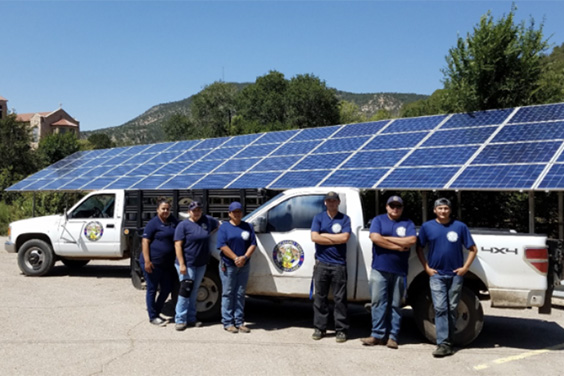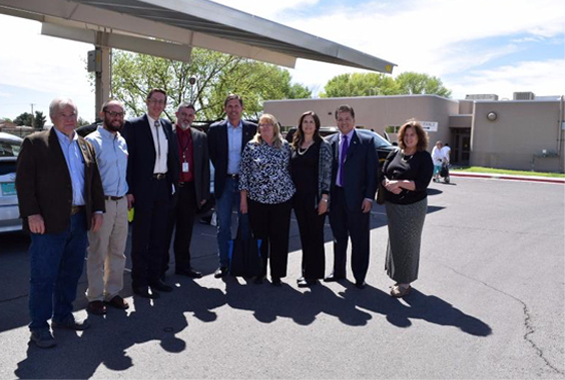SANTA FE COMMUNITY COLLEGE
Santa Fe Community College on implementing a sustainability plan and installing solar.
Santa Fe Community College was among the first campuses in the nation to adopt a sustainability plan and now has approximately 1.7 MW of solar energy powering the main campus and the Higher Education Center campus.
What tools, resources or financing did you use to establish your project?
Two general obligation bonds voted for by the Santa Fe community supported the funding of the projects. The main campus, 6401 Richards Ave. in Santa Fe, has two photovoltaic systems:
- A 1.5-MW system on 5.4 acres on the southeast side of the campus, south of the main access road, near Kids Campus. This array consists of 4,620 SunPower 327-Watt photovoltaic modules mounted on fixed racking. The system generates approximately 43 percent of the college’s electricity demands.
- A 11.8-kilowatt demonstration array designed for teaching purposes, consists of three different types of tracking systems, uses 36 SunPower 327-Watt photovoltaic modules. The demonstration array is on the north side of the main access road near the Trades and Advanced Technology Center.
The systems provide sophisticated data monitoring reporting that allow students, faculty, and staff to maintain and study the arrays.
The installation at the Higher Education Center, 1950 Siringo Road in Santa Fe boasts two solar photovoltaic mounting systems:
- A roof mounted 141-kilowatt system that consists of 432 SunPower 327 Watt photovoltaic modules
- A 16-kilowatt carport array
- These systems have data monitoring accessible to the public online
- These arrays generate about 70 percent of the electricity needs of the building
What benefits have you realized?
Two solar arrays (installed in 2014 on the college’s main campus) and the solar installations at the Higher Education Center (installed in 2015) have saved the college money. Those savings have enabled SFCC to strengthen our services to students and to keep educational costs low. The college saw 25 percent savings in energy costs in 2015 and 40 percent savings in 2016. The solar systems were the primary driver of energy cost savings; however, the college also implemented extensive energy conservation measures as well during those years.
What challenges did you overcome to implement your project?
The college needed to get the support for two general obligation bonds (in 2010 and 2013), which supported the construction of the Health and Science building, the Trades and Advanced Technology Center and the Higher Education Center. This required educating the public about the importance of installing solar energy, not only for teaching and community demonstration purposes but to also to support future cost savings.
What advice would you give neighboring communities who are trying to implement a similar project?
SFCC has found success through the development of community partnerships. The college has worked closely with residents, business partners, as well as city and county partners to educate the community about the benefits of solar energy. The public needs to be aware of the potential cost-savings for the future. Installation and maintenance of solar systems also offer green jobs that stimulate the economy.
Anything else?
Schools and higher education institutions across the country are pursuing solar energy to combat shrinking budgets and projected spikes in grid energy. Solar installations protect school budgets against these spikes and offer hands-on learning experiences for students.


